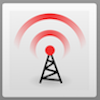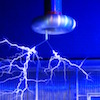Friday Flyer - January 24, 2020

Spotlight on Catholic University of America
The Catholic University of America QuarkNet Center continues to actively explore QuarkNet activities as well as pioneer the use of a cosmic ray detector to probe architecture. This summer they did a CMS data workshop that ended with prototyping the new CMS masterclass measurement and sharing results in a videoconference with the Virginia and Florida International centers. This masterclass version was still in development, so the experience and feedback from the CUA teachers was very helpful. After the masterclass, the group went on to make measurements inside the Basilica of the National Shrine of the Immaculate Conception, adjacent to the CUA campus, where they explored how arches and one of the domes affected cosmic ray rate.

News from QuarkNet Central
The special QuarkNet application for CERN summer programs closes in a few days on Monday, January 27. The CERN application is closed now, but do not worry; just get your QuarkNet application and your letter of reference in by midnight Central Time on Monday. The QuarkNet staff and our CERN counterparts can sort out the rest.
Registration for International Masterclasses continues! Though the Doodle polls are closed, you may find an existing videoconference that you can join. To register, send e-mail to Ken. Just as important, masterclass orientations and updates begin next month. You can find schedules and a registration form at the LHC orientation and neutrino orientation pages. Since the CMS measurement is new this year, any center or institute planning a CMS masterclass needs at least an orientation update.
Learn more about orientations and videoconferencing tests from the IMC circular for this week.

Physics Experiment Roundup
So, can particle accelerators "go green?" Sort of, according to an interesting Interactions article about new accelerator technology. APS Physics reports that, at CERN, the LHCb experiment has been finding new CP-violating interactions that might get us closer to understanding the matter-antimatter question and, at Gran Sasso, the Borexino experiment is probing earth as a source of neutrinos.

Resources
Kottke.org and WIRED introduce a video by astronomer Varoujan Gorjian, explaining black holes at five levels, starting with a talk with a child. (Hat tip to Marge Bardeen!) Each level reveals insights. Just click the image in the article. If you think black holes are mysterious, check out the recent symmetry article on axions. The concept is pretty "out there" but perhaps no more so than this place to measure cosmic rays described in the New York Times. (Again, thanks Marge!) Field trip?

Just for Fun
What is more fun than UFOs? The only news source you will ever need aside from the others offers some choice videos on the topic (your credulity may vary): an Ancient Aliens offering from The History Channel, a DIY fake UFO using a drone, and UFO sightings in Canada from Global News. Perhaps the space folks like Tim Horton's coffee?
QuarkNet Staff:
Mark Adams: adams@fnal.gov
Ken Cecire: kcecire@nd.edu
Spencer Pasero: spasero@fnal.gov
Shane Wood: swood5@nd.edu
